An exploration of Froebelian principles in the natural outdoor environment.
All schools and settings have lived through some very challenging times in the last couple of years due to the Covid pandemic. We at Guildford Nursery School and Family Centre do however feel quite fortunate despite these difficult times. Fortunate because our work is guided by Froebelian principles and fortunate to belong to the Froebel Partnership, an international partnership with ourselves and CREC in the UK and the Seven Stars Kindergarten in New Zealand.
The Froebel Partnership funded by the Froebel Trust is enabling us to research and document the impact and benefits of a Froebelian approach on children, families and educators. This work is proving to be not only fascinating but also is inspiring and motivating practitioners at a time when both inspiration and motivation are in short supply!
In 2020 we researched young children’s voices on Covid (Pascal et al, 2021). We found that the children appeared to prefer being in outdoor spaces; appeared to be more tuned into the natural world; that parents had a deeper appreciation of the importance of the natural world; that educators felt more at peace and safer outside.
Those findings inspired our current research in which we are looking at how children use certain spaces outdoors. We intend to discover:
- What is happening and why?
- What is being learnt and when?
- What is the consequence of this learning?
We are especially fascinated to learn:
- What does a Froebelian approach to engaging with nature in Aotearoa NZ and England, UK look like?
- What brings children and adults to the garden?
- How do children/adults experience and use the forms of life, beauty and knowledge in the garden?
- What do children understand about nature and ecological relationships (the interrelationships of living things, the unity, and connectedness of all life)?
- How does a Froebelian approach to engaging with nature support the wellbeing of children, educators and families?
- How do we provide children with a challenging outdoor experience for play and exploration that is understood and valued by educators and families?
As a Froebel-inspired nursery school and family centre, we are committed to ensuring that children have easy and free access to enriching experiences with nature.
“The child should experience nature ‘in all its aspects – form, energy, substance, sound and colour’.” (Froebel in Lilley, 1967).
At Guildford Nursery School this means that:
- Adults support children to observe nature closely, marvelling in its beauty.
- Adults demonstrate a joyful and curious approach to nature.
- Children have opportunities to care for, observe and learn about the life cycles of ducks, chicks, caterpillars and more.
- Children participate in gardening and know about the food cycle from seed to harvest to cooking and eating.
- Children are allowed and encouraged to climb trees, build dens, explore water, sand, mud, clay and more.
- Children have frequent opportunities to visit the forest school area or woodland areas in the local area.
The research we are undertaking is considering Gibson’s theory of affordances, this looks at what the environment offers the child. As every child is unique so too is the affordance as it is relative to each child. We need a rich set of affordances that afford a wide variety of actions by children.
Gibson tells us that there is only one world but that humankind has altered it to suit ourselves, he suggests that we have done so “wastefully, thoughtlessly, and, if we do not mend our ways, fatally.” (Gibson, 1979, page 130). It is therefore timely to explore what nature offers us but also what we can offer the natural world.
Wally Penetito’s theories around place-based education (2009) also look at connectedness and unity of the education setting with its local area and community. Placed-based education is an approach that takes a school’s geographic location as a context for learning.
Place-based education can happen anywhere – wherever your inquiry takes you. Place-based education can help us to localise our curriculum by giving children a sense of responsibility and affiliation for their surrounding environment, community and region. In addition, Penetito (2009) has stated that at a practical level PBE sets out to answer two fundamental questions: ‘What is this place?’ and ‘What is our relationship with it? ‘
Helen Tovey writes about the need for children to connect with ‘big ideas’, to see the connectedness between, for instance, worms, leaves and soil. (Tovey, 2021). We are finding that nature and sustainability connect all areas of learning.
Our practitioner-researchers have chosen which areas of the garden to research, they have mapped these and are currently using a range of observation techniques to observe what the children are doing, who is doing what, what does the space offer each child.
Initial findings suggest that children new to the nursery school are cautious explorers outdoors but quickly grow in confidence with a nurturing and knowledgeable adult alongside them, we see this particularly with the youngest children and girls. Those children who have been with us for longer appear to get thrills from being in places where they think they are unseen.
Bikes and typical early years resources are soon discarded in favour of sticks, mud, leaves etc. Children use these natural resources to symbolise other things such as sand being a cookie etc.
Children taking their own photos are showing us what interests and fascinates them such as patterns on the back of a microwave in the mud kitchen, on a colander, bark of a tree.
Some are fascinated by the connections and also the law of opposites, for instance-B who found some mushrooms and learnt that they are poisonous whereas the ones he sees his parents buy can be eaten. He learnt of the fungi’s role in processing dead material, I think this constitutes one of those big ideas that Tovey talks about.
We are witnessing a wide range of types of play, for example: sensory exploratory play, physical play, imaginative and symbolic play, bio play where a child observes and/or interacts with a living plant, and restorative play where a child is clearly taking time out, taking a mental break.
It would appear from our early findings that the role of the adult is of paramount importance.
As we proceed with our work, we bear in mind Tovey’s words:
“Froebel believed that merely spending time in nature is not enough – aspects can just pass us by. What better way to engage with the wonder of nature than in close relationship with someone else, who shares an enthusiasm and curiosity about nature and who can inspire and support children’s enquiries.” (Tovey, 2021).
References:
Gibson, James J. “The Theory of Affordances” The Ecological Approach to Visual Perception. Boston: Houghton Mifflin, 1979.
Lilley, I. (1967) Friedrich Froebel A selection from his writings, Cambridge: Cambridge University.
Pascal, C. (2021) Froebel young voices on Covid project, Birmingham: CREC
Penetito, W. (2009). Place Based Education: Catering for Curriculum, Culture and Community. New Zealand Annual Review of Education, 18, 5-29.
Tovey, H. (2017). Outdoor play and exploration [Pamphlet]. Froebel Trust.
Tovey, H. (2020) Froebel’s Principles and Practice Today. London: Froebel Trust
Tovey, H. (2021) An introduction to Froebel, children and nature. London: Froebel Trust



